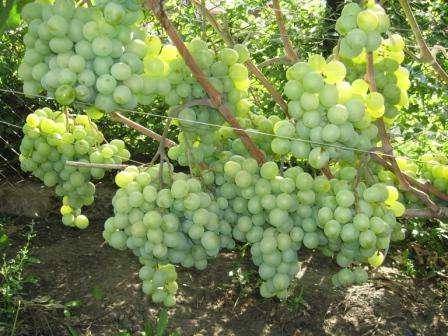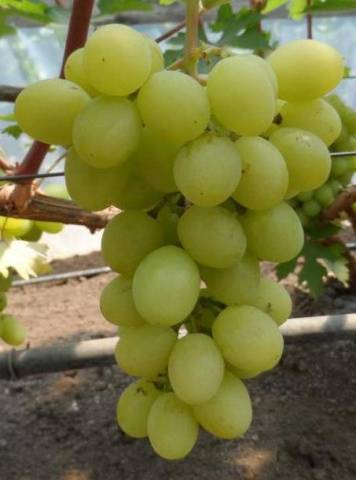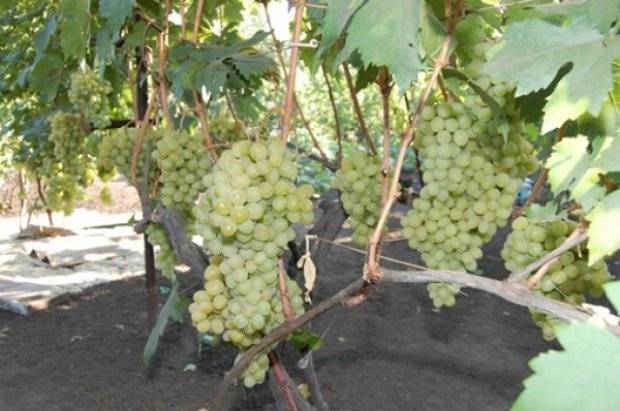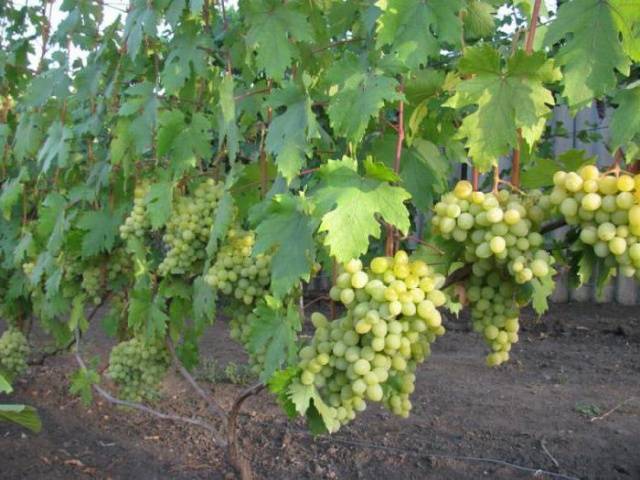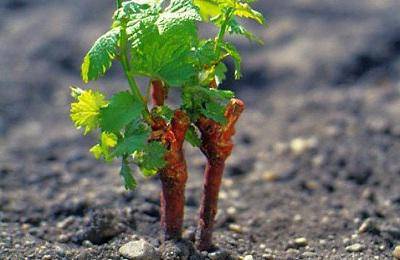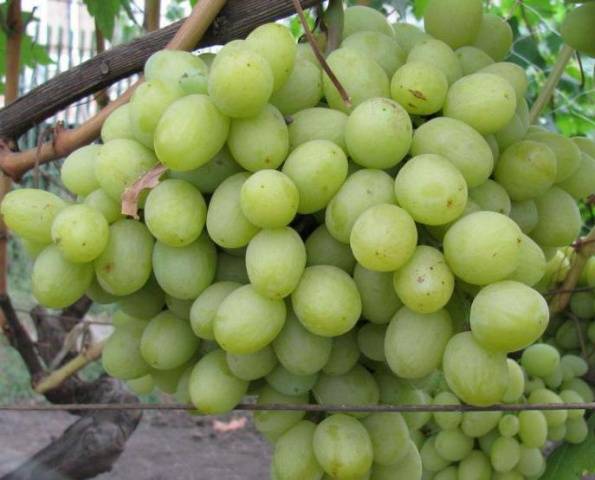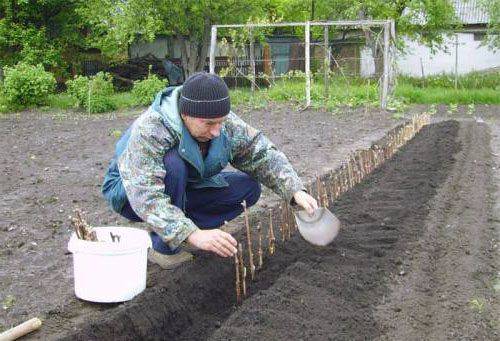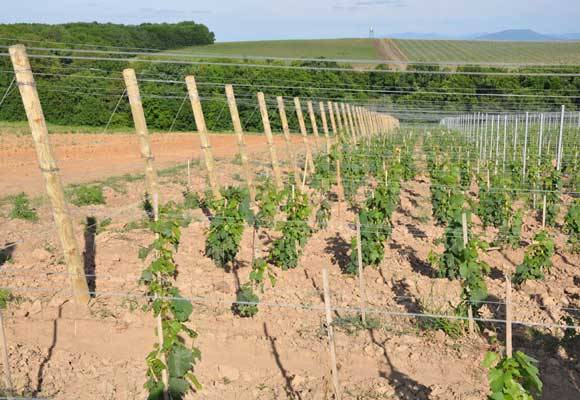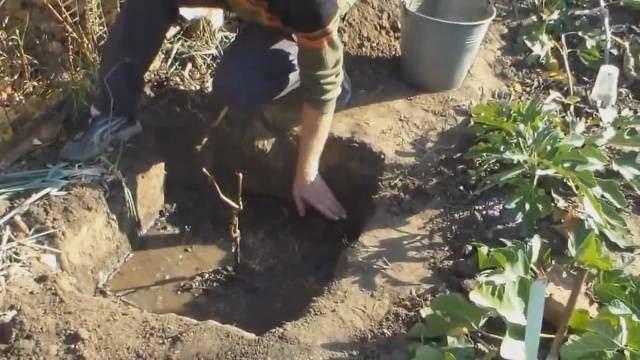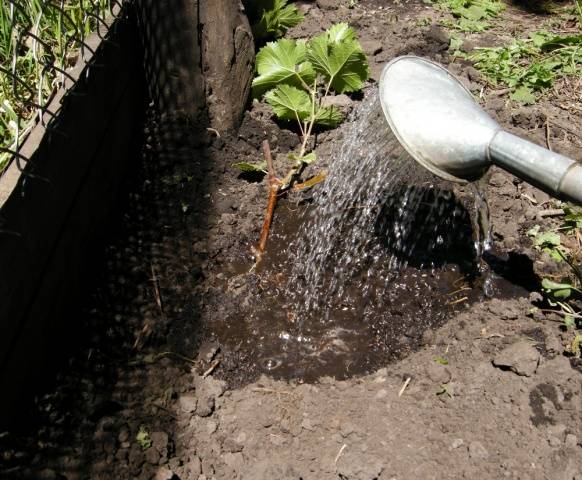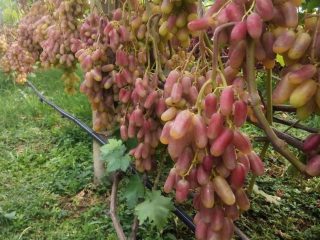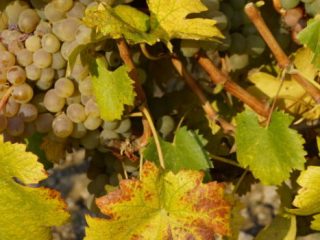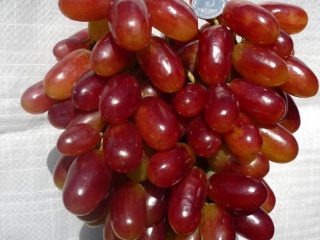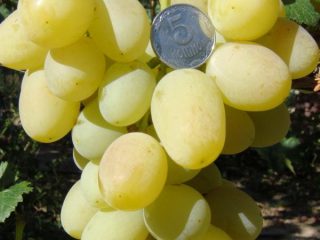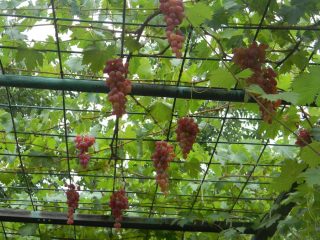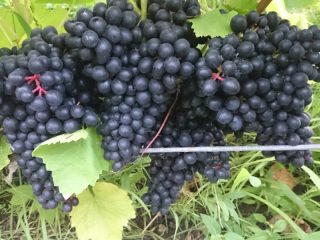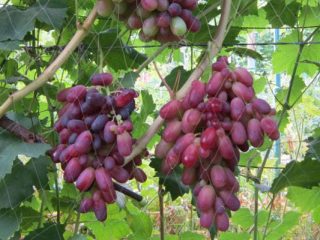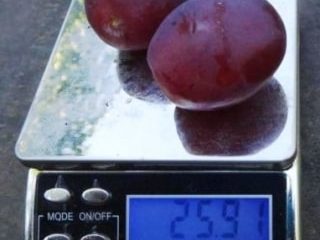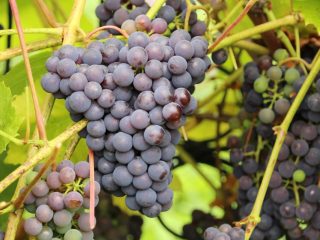Content
Ukraine is considered the birthplace of the Valek hybrid grape. The culture was developed by the amateur N. Vishnevetsky. The variety with amber berries quickly spread across the vast expanses of Crimea. In Russia grape Valek first appeared among residents of the southern regions. Now the variety is gradually adapting to the northern regions and the central zone.
Distinctive characteristics of the variety
To develop a hybrid form, varieties with good pedigree were taken: “Kesha 1”, “Zvezdny”, and also “Rizamat”. When crossing three parents, excellent grapes were obtained, the berries of which are intended for fresh consumption. Initially, the variety was zoned for northern Ukraine, but the grapes adapt well to different weather conditions.
When looking at Valek grapes, description of the variety, photos, reviews, you should start with a review of the brushes. Huge bunches weighing 1.5–2.5 kg are the main advantage of the hybrid. In terms of large-fruitedness, Valek confidently competes with popular productive varieties. The clusters are formed with a tight fit of the berries.
The oval-shaped berries are elongated up to 3 cm in length, and the width reaches 2.8 cm. The weight of one fruit is approximately 14 g. The color of the berries is green. When fully ripe, the flesh and skin turn yellow to amber. In the sun the barrels turn a little brown.
The taste of Valek grapes is sweet.The aroma is reminiscent of a mixture of nutmeg and pear. The pulp is tender, fleshy, resistant to cracking due to the thick skin, but when eaten it is barely felt.
Good fruiting cannot occur without strong vine growth. The Valek grape bushes are spreading and characterized by intensive vine growth. The shoots have time to ripen during the season. Discarding bisexual flowers increases the percentage of self-pollination. The color lasts for about 10 days. Pollination will occur even in rainy summers without the participation of bees.
According to the ripening period, the Valek variety is considered an early grape. The first bunches can be picked in the first ten days of August. It usually takes 105 days from the awakening of the buds to harvesting. In the south of Ukraine, clusters of the hybrid Valek ripen earlier than those of the popular early variety Arcadia.
Positive and negative qualities
Reviewing the description of the Valek grape variety, photos, reviews, videos, as a summary we will consider the positive and negative features of the culture. The advantages include:
- original taste qualities not inherent in other varieties;
- high yield, stable fruiting, large clusters and fruits;
- good presentation of the bunches;
- early maturation;
- bisexual flowers are capable of pollinating neighboring bushes, not without the participation of bees;
- there is no pea clustering of berries;
- the Valek grape harvest can be transported and stored;
- resistance to fungal diseases;
- the vine overwinters well, even if it has been subjected to hypothermia to a temperature of –24OWITH.
Valek was bred from the three best grape varieties, which are difficult to find negative traits. The downside is the poor compatibility of the rootstock with the scion. It is better to propagate Valek grapes by cuttings on their own roots rather than by grafting.
In the video you can get acquainted with the Valek variety:
Reproduction options
The Valek grape variety can be propagated in different ways. The winegrower chooses the most affordable and easiest option for himself. It is best to purchase seedlings or grow them from cuttings, but you can use other methods.
To propagate the Valek grape variety, the following methods are used:
- Growing from your own roots. For the Valek variety, this is the most effective method of propagation, given that the crop is a hybrid. The seedling is purchased from a nursery or market. If your neighbors have an adult Valek grape bush growing on their property, then in the fall you can ask for a cutting. In the spring, a section of the vine is planted in a flower pot, and it makes an excellent seedling.
- Reproduction by grafting allows for rapid growth. However, Valek is poorly compatible with other varieties. Just for fun, you can try to graft a couple of cuttings or buds onto another bush, but you shouldn’t rely on this method of propagation.
- Reproduction by cuttings for the Valek variety is also acceptable, since the new seedling will grow on its own root. The method is based on digging up a section of a mature vine without cutting off the vine from the bush. Over time, the cuttings will take root in damp soil. Now it can be cut off from the bush with pruning shears and replanted for further rooting.
There is an option for propagating grapes by seed. The method is suitable if it was not possible to obtain seedlings or cuttings.Large ripened seeds are removed from the purchased bunch of berries and planted in the ground. After 2 years, an excellent seedling is obtained. However, for hybrid varieties, the option with a seed is not suitable. A grape can only grow with the characteristics of one parent.
Features of care
Considering the Valek grapes and the description of the variety, it is worth noting the light-loving nature of the crop. Bushes develop only in a free area, not shaded by large trees. Close proximity to any buildings similarly inhibits grapes.
On the site for seedlings, hills are chosen, especially if there is a high location of groundwater. It is optimal to choose the south side without drafts. Strong wind currents reduce the percentage of self-pollination of flowers, which affects the yield.
The Valek grape variety has no special requirements for soil composition, but the bush grows better on light soil. The fertility of the soil is increased by applying fertilizing during planting of the seedling and throughout the entire period of the crop's life.
Mature Valek grape bushes are vigorous. When planting seedlings, maintain a distance of at least 3 m. On large plantations, maintain a minimum row spacing of 4 m. Free space is required not only for the growth of the vine. The horse system also needs to develop and receive a full portion of nutrients.
The propagation period of grapes begins in the third decade of March and ends in November. The time for planting planting material and the method of propagation are determined individually. Vaccinations, as well as planting of dormant seedlings, are carried out in early spring. With the establishment of constant warmth in late spring, grapes with blossoming leaves and green shoots are planted.At the beginning of summer, you can also plant green seedlings, but this time is better suited for propagation by cuttings.
In autumn, planting seedlings should not be delayed, especially in cold regions. The grapes should have already entered the stage of winter dormancy, but still have the ability to take root. The optimal time for autumn planting is mid-October. The sap flow of the grapes has already stopped, but before the onset of frost the seedling will have time to take root and stock up on nutrients.
Good rooting and development of the bush depends on a properly prepared hole. It is important to initially provide nutrients that will be enough for the seedling to survive the first years of life. A hole is dug at least 80 cm deep. The shape can be round or square, but the hole is also made up to 80 cm wide.
At the bottom of the hole, a drainage layer about 20 cm thick is laid out from stones and sand. If the site has crumbly sandy soil, then drainage can be abandoned. For further filling, a nutrient mixture is prepared. Chernozem is mixed in equal quantities with humus or compost, and dry granules of mineral fertilizer are added. Usually superphosphate and potassium are used. Fill the hole with the nutrient mixture so that a depth of about 50 cm remains for planting the seedling.
When purchasing a seedling of the Valek grape variety, carefully examine its appearance. The root must be more than 10 cm long without dry branches. The aerial part is without damage to the bark and with at least four developed buds.
Before planting, the seedling is immersed in water for a couple of hours. You can add a root growth stimulator.The seedling is lowered into the hole with its heel on the mound, and the roots are spread along the slopes. The aerial part of the buds is turned to the north. The root heel faces south. The seedling is carefully covered with loose soil, without burying it above the level of the root collar. After powdering, up to three buckets of water are poured into the hole. After the liquid is absorbed, the soil is filled to the desired level, and mulch is poured on top.
Further care for Valek grapes includes watering, fertilizing, weeding, pruning the vine, and spraying with fungicides.
Valek grapes are watered as the soil dries and always before flowering, during berry set, and also in late autumn. The soil is constantly loosened and weeded weeds, pour mulch from sawdust or peat.
Fertilizing with mineral complexes depends on the condition of the soil, and organic matter is in demand every season. The bushes are topped with a solution of bird droppings, and instead of mulch, they are sprinkled with dry rotted manure or compost.
Fungicides are used for preventive spraying. Colloidal sulfur and Bordeaux mixture show good results in the fight against fungus.
Reviews
Reviews from gardeners and summer residents will help you learn more about Valek grapes.
